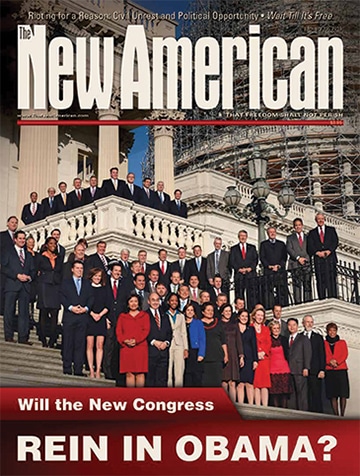Inside Track
ObamaCare Shuttering Hospitals and Free Clinics
Across the nation, ObamaCare is causing hospitals to close or to downsize, free clinics to shut down, and healthcare — when it can be obtained at all — to be delivered slowly or even rationed.
These were all predictable results of making government the dominant provider of health insurance, which the Affordable Care Act (ACA) does by subsidizing private insurance and vastly expanding Medicaid eligibility.
The expansion of Medicaid — the primary means of widening coverage under the ACA — is the main cause of these woes. The federal government simply doesn’t reimburse providers enough to make treating Medicaid patients worthwhile. Medicare, too, underpays providers, and its rolls are growing by the day as the Baby Boomers reach age 65.
“Whereas private insurance might pay the surgeon $4,500 for a spinal surgery (my specialty), Medicare paid less than $1,200,” Lee Hieb, M.D., recounts in her forthcoming book, Surviving the Medical Meltdown: Your Guide to Living Through the Disaster of Obamacare. (A summary of the book, including quotations, can be found at WND.com; WND Books is the publisher.)
Hieb, an orthopedic surgeon and past president of the Association of American Physicians and Surgeons, also points out that the federal government flatly refuses to reimburse doctors and hospitals for services it deems “not medically necessary.” Bureaucrats, rather than doctors and patients, are deciding which treatments patients should receive. Put more simply, care is being rationed, precisely as ObamaCare opponents predicted.
“The result is predictable: economic failure of hospitals and physician practices that have become dependent on government payment for large segments of their population,” Hieb writes. “The hospitals and offices that will close are those with the least private insurance.”
Thus, it comes as no shock that smaller hospitals in poorer areas, which therefore have a high concentration of Medicaid patients, are already beginning to shut their doors. WND’s Paul Bremmer reports that in 2013, 18 acute-care hospitals in the United States closed, and “at least 12 more hospitals have closed this year in rural areas alone,” with more to come. “A report at Modern Health Care just a few weeks ago confirmed that among just the critical-access hospitals, which have 25 beds or fewer, there were 14 closures in 10 states in 2013.”
Temple Community Hospital of Los Angeles, for example, closed up shop in September, citing “low reimbursement rates” and “regulatory requirements.” Vincent Pungo Hospital of Bellhaven, North Carolina, went under in July, leaving residents of what Bremmer describes as “a small, economically destitute farming town” with no nearby hospitals or emergency rooms. And the Boston-area Quincy Medical Center is slated to close by the end of the year in no small part because about 70 percent of its patients are covered by either Medicare or Medicaid.
Other hospitals feeling the ObamaCare pinch haven’t closed down yet, but they have begun laying off workers.
“While the rest of the U.S. economy is stabilizing or improving, health care is entering into a recession,” John Howser, assistant vice chancellor of Vanderbilt University Medical Center, told USA Today in October.
The paper continued:
Health care providers announced more layoffs than any other industry last month — 8,128 — largely because of reductions by hospitals, according to outplacement firm Challenger Gray and Christmas. So far this year, the health care sector has announced 41,085 layoffs, the third-most behind financial and industrial companies.
Total private hospital employment is still up by 36,000 in the past 12 months, but it's down by 8,000 since April, and more staff reductions are expected into next year.
This month, Indiana University Health laid off about 900 workers as part of a move to trim its budget by $1 billion over five years. Vanderbilt plans to eliminate 1,000 jobs by the end of the year to help shave operating costs 8% a year. The Cleveland Clinic is offering buyouts to 3,000 employees as it shaves its annual operating costs by $330 million.
The Cleveland Clinic, by the way, told the Daily Caller that “about half of those [budget cuts] are related to the Affordable Care Act.”
Fewer hospitals and fewer employees at the remaining hospitals can only mean one thing: longer wait times for patients.
“The hospital in Arizona where I used to work is a 250-bed facility with the latest state-of-the-art cardiac care,” Hieb writes. “It is a referral center for about 400,000 people. Although you will get great care there, if you go by foot or car to the emergency room with chest pain, you may wait over six hours for an evaluation because the system is overloaded.”
Such conditions, naturally, tend to discourage young people from entering the medical profession, which will only exacerbate the shortages as older medical professionals retire or are let go.
“In areas where fewer and fewer physicians remain, it is very difficult to recruit new physicians to the job — since the new docs do not want to be forced to cover impossible patient loads. Around the country, there are already these medical ‘black holes’ — areas without coverage for certain specialties,” Hieb notes.
In the past, those unable to obtain care from local providers — usually because they couldn’t afford it — could still get free or low-cost treatment at some clinics. ObamaCare, however, has hit Americans with a double whammy: While hospitals are closing or downsizing, many of these clinics are also disappearing, leaving people in poor and rural areas with even fewer opportunities to obtain care. “Nearly a dozen clinics that have closed in the past two years cited the federal health law as a major reason,” reported the Wall Street Journal.
Most of the closings have occurred in states that proceeded with the Medicaid expansion, which was declared optional by the Supreme Court. With the expansion of coverage, many clinics saw a significant reduction in patient visits. The Western Stark Free Clinic of Massillon, Ohio, and the Neighborhood Involvement Program medical clinic of Minneapolis, Minnesota, both closed after large numbers of their patients stopped coming in for treatment.
Another reason for the closings is “a drop in funding because donors believe there is no longer a need for free or low-cost care in the wake of the health law,” wrote the Journal. “Over the past two years, donations to free and charity clinics, which in some cases charge nominal or sliding fees, have dropped 20%, according to a report this year by the National Association of Free and Charitable Clinics. During that time, patient demand has risen 40%.”
Of course, as the Journal pointed out, even when ObamaCare is fully rolled out, there will still be 31 million uninsured Americans, according to Congressional Budget Office projections. Where are these people going to get healthcare if hospitals and free clinics go away? For that matter, where are the rest of us going to get it?


